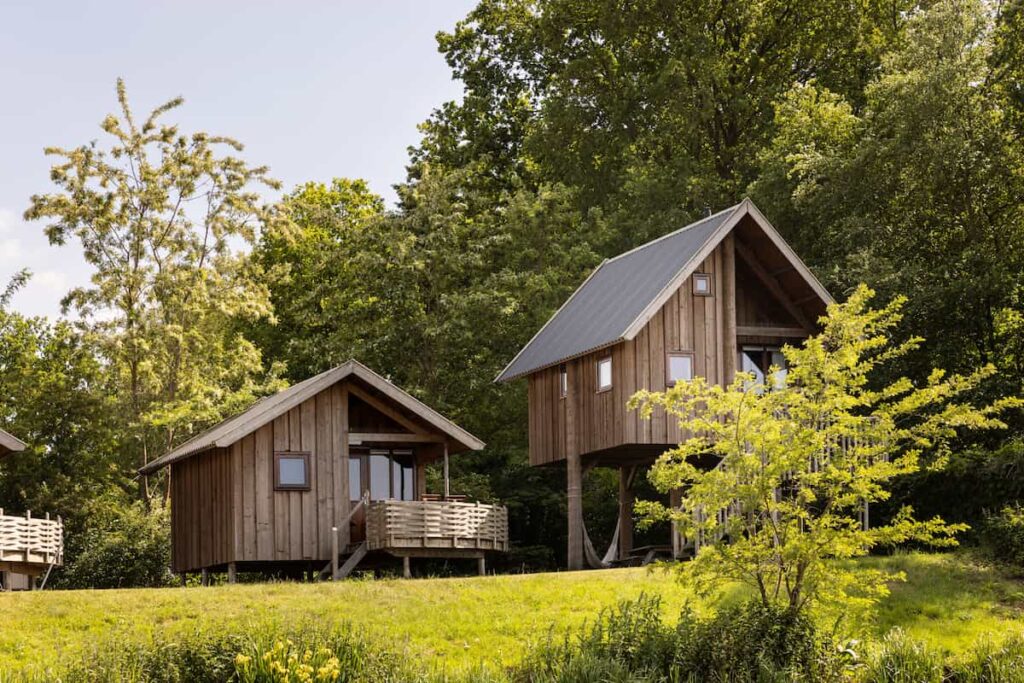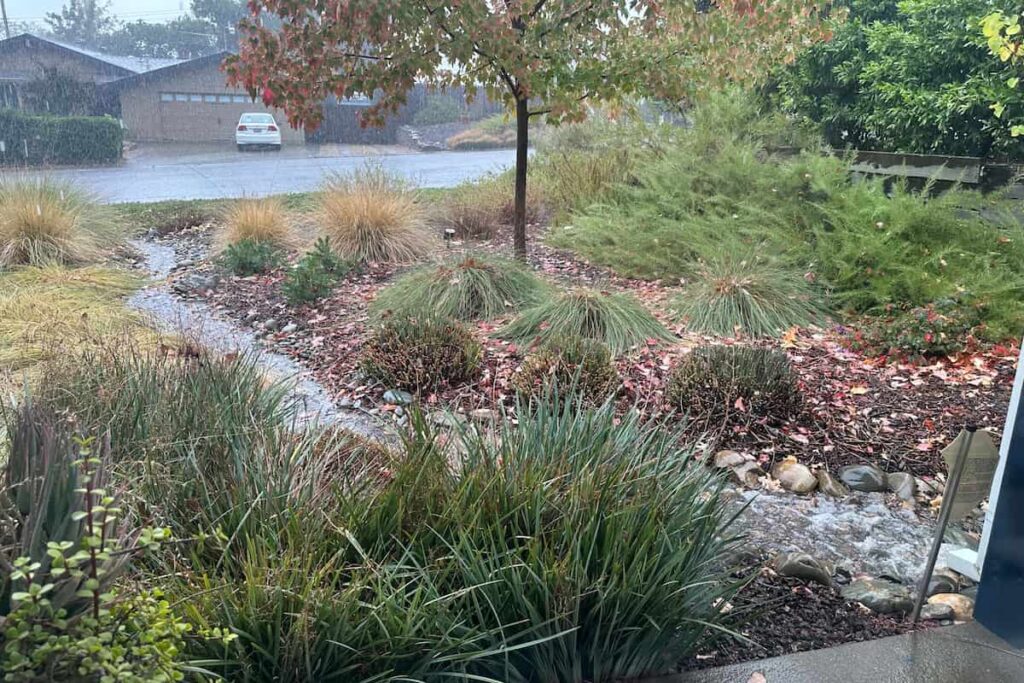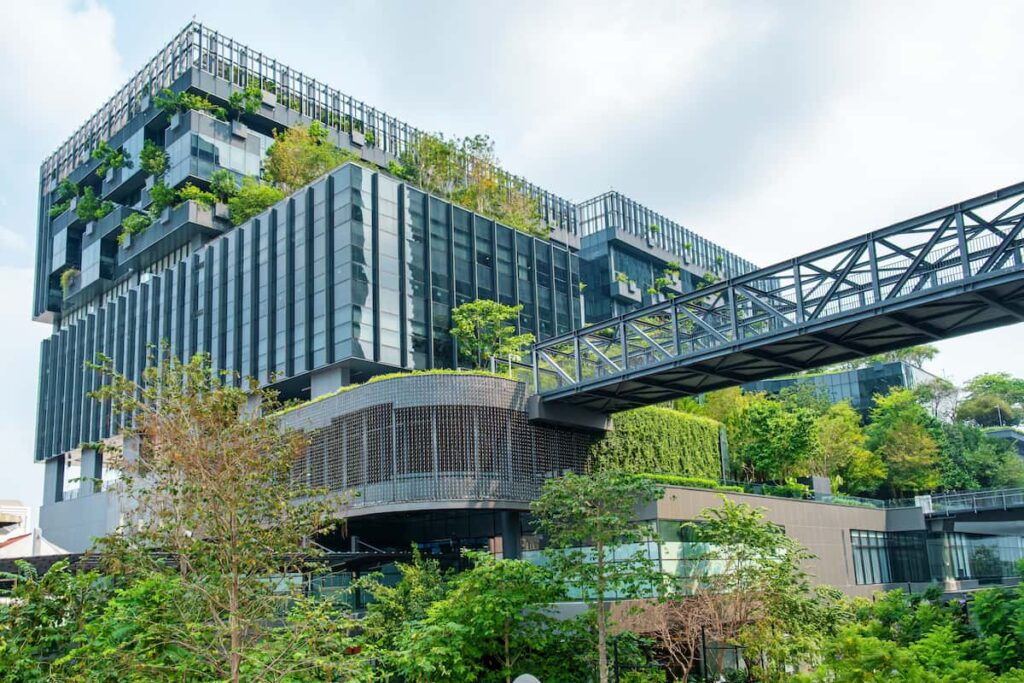Architects now work across a range of modern-minded fields. One area where they’re putting their creativity to use is sustainable landscape architecture and environmental sustainability. And it’s as rewarding a field as it is technical.
So, let’s take a closer look at eco-friendly design practices and see how sustainable landscaping is a viable career path after our Master in Architecture.
What is sustainable landscape architecture?
Sustainable landscape architecture is the practice of designing outdoor spaces that are functional, aesthetically pleasing and environmentally responsible. With thoughtful planning, landscape architects create built environments that support long-term ecological balance. This may be achieved through plant selection, spatial design and climate-responsive solutions to conserve water, support biodiversity and adapt to the environmental challenges of any given region.
The need for sustainable landscaping has intensified with climate change. Projects like the Resilient Lands Program in Goonellabah are working proactively to build better—with canopy cover, native verge gardens and edible plantings—to create cooler, more biodiverse urban environments.
The benefits of sustainable landscape design vary.

Built environments enjoy improvements in urban heat, water conservation and air quality. Thoughtful, sustainable design is also proven to make communities more resilient and active. To make these benefits more widespread, collaboration is required across industries from professionals, government bodies and communities that will be making use of the designs.
What are key features of sustainable landscaping?
Naturally, there are key features that make up sustainable landscaping. And this goes beyond a few native, drought-tolerant plants. Architects have to incorporate features that reduce waste, have tangible ecological benefits and, ultimately, require minimal maintenance. This is a departure from more complex landscape designs that rely on chemical fertilizers and excessive irrigation.
There are techniques for good sustainable landscape architecture. Methods like drip irrigation and rainwater harvesting help conserve water. Using compost and mulch improves soil health. Many landscape designers will also invest in energy-efficient features like shade trees and windbreaks to regulate temperatures.
Rain gardens, bioswales, and permeable hardscapes manage stormwater naturally and support groundwater replenishment.

It’s essential to work with experienced landscapers who understand eco-friendly practices and can design customized solutions tailored to each region. Over time, thoughtful planning will result in outdoor spaces that are beautiful, environmentally responsible and cost-effective.
What materials are used in eco-friendly landscape architecture?
So, how can landscape architecture be eco-friendly in its use of materials? By prioritizing durability.
It’s essential to consider a product’s full lifecycle. That includes manufacturing, installation and maintenance—alongside being recyclable or biodegradable. Sustainable landscape architects also look at locally sourced and recycled materials, with a focus on low impact in embodied energy and carbon footprint. Green materials like bamboo, recycled plastics, rammed earth and reinforced stone composites are popular choices for circular designs.
Tools like Green Seal, LEED directories, and certification bodies help architects identify products that meet sustainability criteria.

Sustainable design is already being used at scale across the world. For example, the Shanghai Tower incorporates rainwater harvesting, wind turbines and greywater systems. You also have high-efficiency insulation and solar panels being incorporated at The Crystal and The Change Initiative. Moreover, hospitals like Khoo Teck Puat have gone greener with roof gardens, solar heating and passive cooling systems. All are key examples for how sustainable architecture design can meet functional, aesthetic demands while serving the environment.
Study the Master in Architecture
Interested in learning more about sustainable landscaping? You might be the perfect candidate for our Master in Architecture. This full-time, 10-month program prepares students for professional licensure in Spain and the EU, offering a global, entrepreneurial mindset. Delivered in English and based in Madrid—with components in Amsterdam—the program blends rigorous architectural education with real-world relevance, focusing on leadership and innovation in the profession.
Further to this, much of the program focuses on sustainable architecture and environmental design. Through an advanced architectural design and construction studio, students tackle complex urban challenges by applying sustainable technologies and strategies within the broader frameworks of architecture. They also gain technical expertise to create more resilient and responsible built environments.
The curriculum includes three core components: a Thesis Project module led by renowned architect Ben Van Berkel of UNStudio; a design studio centered on sustainability; and a Design Management module that incorporates entrepreneurial and business training. It’s a unique combination that elevates students to professional standards in an evolving future.
Follow the link below to find out more information.
Understand sustainable landscape architecture
Enhance your creativity and craft with our Master in Architecture.

Benjamin is the editor of Uncover IE. His writing is featured in the LAMDA Verse and Prose Anthology Vol. 19, The Primer and Moonflake Press. Benjamin provided translation for “FalseStuff: La Muerte de las Musas”, winner of Best Theatre Show at the Max Awards 2024.
Benjamin was shortlisted for the Bristol Old Vic Open Sessions 2016 and the Alpine Fellowship Writing Prize 2023.






